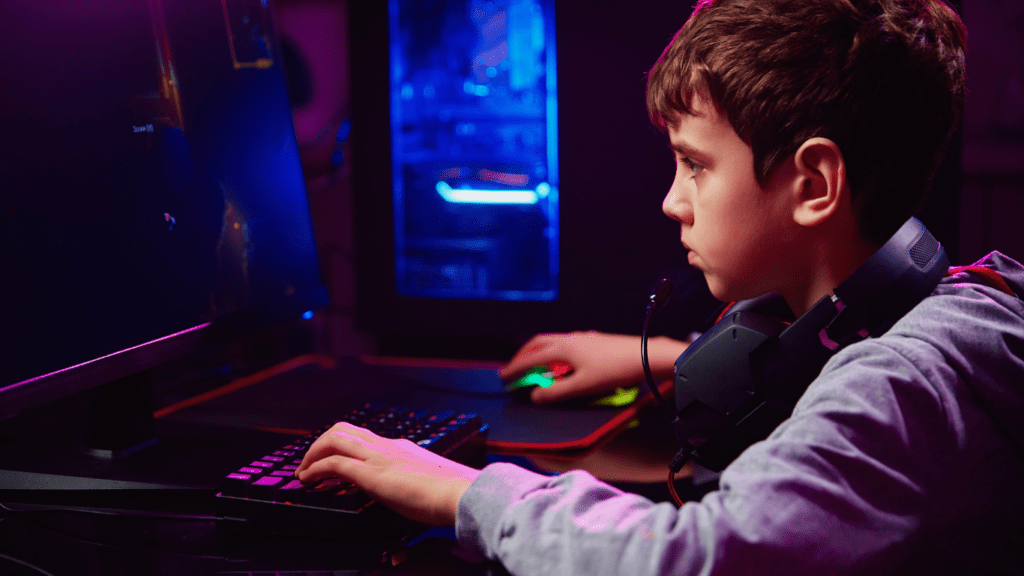In today’s digital age, ensuring the safety of our children’s online activities has become more crucial than ever. As a parent, I understand the constant worry about the potential risks lurking on the internet.
That’s why staying informed about the latest safety guidelines is essential to protect our kids in the virtual world. With the ever-evolving online landscape, it’s vital to stay updated on the newest safety measures to safeguard our children from online threats.
In this article, I’ll delve into the latest safety guidelines designed to empower parents and caregivers in navigating the complexities of kids’ online activities. From setting parental controls to educating children about cyber safety, these guidelines are indispensable tools in promoting a secure online environment for our young ones.
Exploring the New Safety Guidelines for Kids’ Online Activities
Diving into the realm of the latest safety guidelines for kids’ online activities, I delve into the crucial aspects that shape a secure online environment for children, amid the ever-evolving digital landscape.
Examining the essence of parental controls and the significance of empowering children with cyber safety knowledge, I shed light on pivotal strategies to safeguard young users as they navigate the vast virtual space.
Importance of Implementing the Guidelines
Exploring the new safety guidelines for kids’ online activities is crucial in today’s digital landscape to ensure a secure online environment for children. Implementing these guidelines is imperative to mitigate the risks associated with young users navigating the internet.
By adhering to these updated safety measures, parents can actively protect their kids from online threats and potential harm. Parental controls play a central role in enforcing these guidelines, allowing parents to monitor and regulate their children’s online activities effectively.
By utilizing parental control settings on devices and online platforms, parents can limit access to inappropriate content, manage screen time, and track their children’s digital interactions. These controls serve as a proactive measure to safeguard kids from encountering harmful material and interacting with potentially dangerous individuals online.
Moreover, educating children about cyber safety is equally essential in empowering them to make informed decisions while using the internet. By instilling awareness about online threats, privacy concerns, and safe online behavior, parents can equip their kids with the knowledge and skills necessary to navigate the digital world responsibly.
Teaching children about the importance of protecting their personal information and recognizing potential dangers online enhances their ability to identify and respond to risky situations effectively. Incorporating these new safety guidelines into everyday online practices is a proactive approach to creating a secure digital space for children.
By integrating parental controls and emphasizing cyber safety education, parents can establish a foundation of protection that enables kids to explore the digital realm safely. Prioritizing the implementation of these guidelines is essential in fostering a positive and secure online experience for young users in today’s ever-evolving digital landscape.
Risks Associated with Children’s Online Activities
- Identifying Digital Risks: Understanding potential risks in children’s digital interactions helps parents recognize and address threats such as cyberbullying, inappropriate content, and privacy breaches.
-
Implementing Proactive Safeguards: By being aware of these risks, parents can implement effective measures like parental controls, open communication, and monitoring practices to ensure a safer online experience for their children.
Cyberbullying Concerns
When it comes to children’s online activities, cyberbullying stands out as a significant concern. It involves the use of digital platforms to harass, embarrass, or intimidate others, leading to emotional distress and potential long-term psychological impacts on the victims.
By monitoring children’s online interactions and encouraging open communication, parents can help protect their kids from cyberbullying incidents.
Privacy and Data Security Issues
Privacy and data security are paramount in children’s online activities. With the vast amount of personal information shared online, kids are vulnerable to privacy breaches and data misuse. It’s essential for parents to educate their children about the importance of safeguarding their personal information, recognizing the risks of sharing sensitive data online, and practicing safe digital habits to prevent privacy violations and data breaches.
Parental Role in Monitoring and Supervising Kids’ Online Interactions
As a parent, my primary responsibility is to actively monitor and supervise my kids’ online interactions to ensure their safety in today’s digital world. It’s crucial for me to stay informed about the latest safety guidelines and tools available to protect my children while they navigate the internet.
I monitor my children’s online activities by setting up and utilizing parental controls on their devices. These controls allow me to regulate their internet usage, block inappropriate content, manage screen time effectively, and track their digital interactions.
By implementing these measures, I can create a secure online environment for my kids to explore and learn safely. Educating my children about cyber safety is another essential aspect of my parental role.
It’s important to empower them with the knowledge to make informed decisions when encountering potential online threats. By equipping them with the necessary skills to recognize and respond to cyber risks, I am enabling them to navigate the digital world responsibly and confidently.
One of the specific risks I actively address is cyberbullying, which can have severe emotional and psychological consequences for children. By monitoring my kids’ online interactions and fostering open communication, I can help prevent and mitigate the impact of cyberbullying.
Encouraging my children to communicate any concerns or incidents they encounter online reinforces trust and allows me to intervene promptly when needed. Furthermore, ensuring privacy and data security is paramount in safeguarding my children’s online experiences.
I educate my kids about the importance of protecting their personal information and practicing safe digital habits to prevent privacy breaches and data theft. By instilling these practices early on, I am cultivating a culture of awareness and responsibility that enhances my children’s online safety.
By actively monitoring, supervising, and educating my children about online safety, I can establish a foundation of protection that promotes a positive and secure digital experience for them in today’s evolving digital landscape.
Implementing Internet Safety Measures at Home
In safeguarding my child’s online experience, I actively monitor and supervise their internet activities. By utilizing parental controls, I create a secure digital environment and effectively manage my child’s online interactions.
These measures allow me to regulate internet access, limit exposure to inappropriate content, control screen time, and track digital engagements for a safe browsing experience. Educating my child about cyber safety is essential in empowering them against online threats.
Informing them about internet risks and teaching them to make informed decisions online equips them with the necessary skills to navigate the digital world securely. By instilling these principles, I help my child recognize potential dangers and protect themselves from harmful online elements.
Open communication plays a pivotal role in addressing issues like cyberbullying. By fostering a transparent dialogue with my child, I create a safe space for them to discuss any online concerns or encounters they may face.
This practice not only aids in combating cyberbullying but also strengthens our parent-child relationship, building trust and support in navigating the digital landscape together. Teaching my child about the importance of privacy and data security is crucial in safeguarding their personal information online.
I educate them on the significance of protecting sensitive data, practicing secure digital habits, and recognizing potential privacy risks. By imparting these values, I empower my child to maintain their online privacy and prevent privacy violations or data breaches, ensuring a secure online presence.



 William Denovan played a crucial role in shaping the success of Dazzling Holly Moms, contributing his expertise in content strategy and platform development. His ability to create engaging, informative content helped establish the platform as a valuable resource for modern mothers. William's dedication to ensuring the platform consistently delivers high-quality parenting tips, wellness advice, and travel recommendations has been instrumental in its growth. His contributions continue to enhance the experience for moms seeking guidance and inspiration on their parenting journey.
William Denovan played a crucial role in shaping the success of Dazzling Holly Moms, contributing his expertise in content strategy and platform development. His ability to create engaging, informative content helped establish the platform as a valuable resource for modern mothers. William's dedication to ensuring the platform consistently delivers high-quality parenting tips, wellness advice, and travel recommendations has been instrumental in its growth. His contributions continue to enhance the experience for moms seeking guidance and inspiration on their parenting journey.